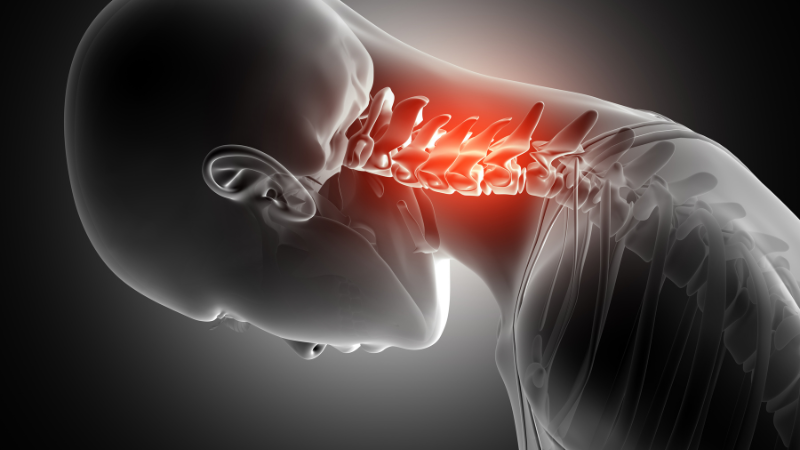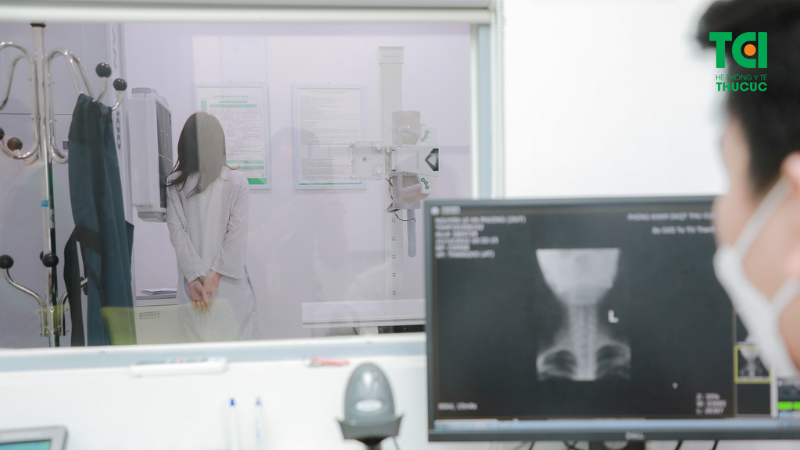The cervical spine, or neck vertebrae, is a common site for various musculoskeletal disorders, leading to pain, limited mobility, and significant impacts on health and daily life. Understanding the structure and function of the cervical spine is crucial for recognizing and addressing these issues.
1. What is the Spine?
The spine, or vertebral column, is the central support structure of the body, connecting vertebrae into a cohesive system. This critical component provides stability and flexibility, enabling movements such as standing, walking, twisting, and bending. Additionally, the spine serves a protective function, safeguarding the spinal cord—a crucial nerve conduit that links the brain to the rest of the body. Injury to the spinal cord can severely disrupt movement and sensation.
2. What is the Cervical Spine?
The cervical spine consists of the first seven vertebrae at the top of the spine, forming a C-shaped curve that begins just below the skull. It is divided into two parts:
– Upper Cervical Spine: Comprising the first two vertebrae, known as the atlas (C1) and axis (C2). These vertebrae are unique in structure, allowing for a wide range of head movements.
– Lower Cervical Spine: Consisting of the remaining five vertebrae, which provide support and flexibility to the neck.

The cervical spine consists of the first seven vertebrae connected together.
3. Characteristics of the Cervical Spine
3.1 General Characteristics
The cervical vertebrae have a flattened body, with the front portion being narrower than the back. The transverse processes, which extend from the sides of each vertebra, have a unique foramen through which vertebral arteries pass. These processes are split into two tubercles—the anterior and posterior—which provide attachment points for muscles and ligaments. The vertebral foramen, a triangular opening, is larger in the neck vertebrae than in other parts of the spine to accommodate the spinal cord’s cervical enlargement, which is essential for upper limb function.
3.2 Specific Characteristics
– C1 (Atlas): Lacks a vertebral body, forming a ring-like structure. It connects with the skull and the second cervical vertebra (C2), facilitating the nodding motion of the head.
– C2 (Axis): Characterized by the odontoid process (or dens), which projects upward to form a pivot for the atlas, allowing the head to rotate.
– C4: Notable for the transverse process, which is broader and can compress the carotid artery if enlarged.
– C7: Known as the vertebra prominens, this vertebra has a long, non-bifurcated spinous process that can be felt through the skin. It marks the transition between the cervical and thoracic spine.
4. Common Cervical Spine Conditions
Persistent pain in the neck or upper back often signals underlying spinal conditions. Some common conditions associated with neck vertebrae pain include:
– Cervical Spondylosis: A degenerative condition that typically occurs in middle-aged and older adults due to natural wear and tear. Symptoms include neck pain that radiates to the upper back, shoulders, and arms, accompanied by stiffness and dizziness.

Cervical spondylosis is a common condition many people face.
– Cervical Spine Inflammation: Inflammation of the neck vertebrae leads to chronic pain in the neck and shoulders. Without treatment, the pain can radiate to the shoulders, making it difficult to identify the exact location of discomfort. A thorough examination by a specialist is necessary for accurate diagnosis and appropriate treatment.
– Cervical Bone Spurs: Often a result of cervical spondylosis, bone spurs can compress surrounding nerves, causing sharp pain that extends from the neck down the back. The pain intensifies with movement, leading to sleep disturbances, concentration difficulties, headaches, and fatigue.

Patients should visit an musculoskeletal specialist for accurate diagnosis.
When experiencing symptoms related to the cervical spine, it is essential to seek evaluation from a reputable musculoskeletal specialist. Patients can schedule an appointment through the hotline of TCI for prompt and effective care.








